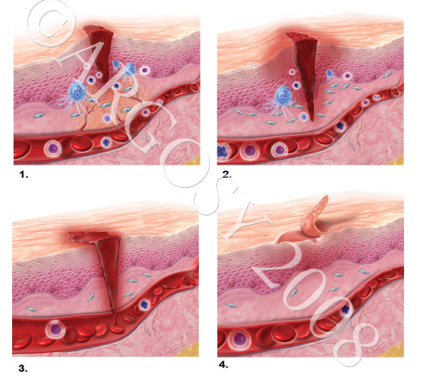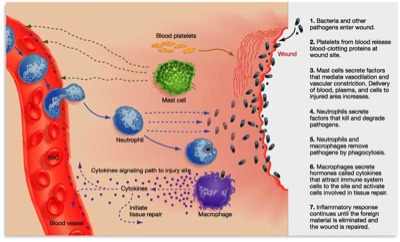Sign up for FlowVella
Sign up with FacebookAlready have an account? Sign in now
By registering you are agreeing to our
Terms of Service
Loading Flow



36.
1. First, the tissue trauma causes injured tissue cells, macrophages, mast cells, and others to release inflammatory chemicals, which cause the capillaries to dilate and become very permeable. This allows white blood cells and plasma fluid rich in clotting proteins, antibodies, and other substances to seep into the injured area. The leaked clotting proteins construct a clot which stops the loss of blood, holds the edges of the wound together, and effectively isolates the injured area, preventing bacteria, toxins, or other harmful substances from spreading to surrounding tissues. The part of the clot exposed to air dries to form a scab.
2. While the whole inflammatory process is going on, organization, the first phase of tissue repair begins. During organization, the blood clot is replaced by granulation tissue. Proliferating fibroblasts produce growth factors as well as collagen fibers to bridge the gab. Some have properties that can pull the wound together.Macrophages digest the original blood clot and collagen fiber deposit continues. The granulation tissue (scar tissue) is highly resistant to infection.
3. During organization, the surface epithelium begins to regenerate, growing under the scab, which soon detaches. As the fibrous tissue beneath matures and contracts, the regenerating epithelium thickens until it finally resembles that of the adjacent skin. The end result is fully regenerated epithelium, and an underlying area of scar tissue.
